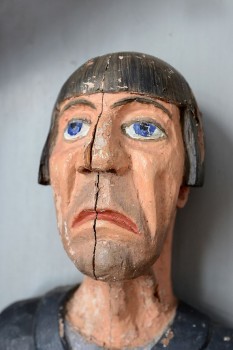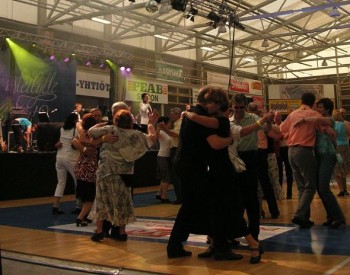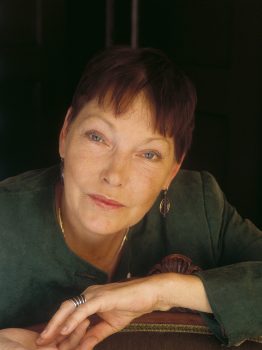Search results for "2011/04/2010/05/song-without-words"
Family mysteries
31 March 2003 | Archives online, Fiction, poetry
Extracts from Einen keittiö, Eines kök (‘Eine’s kitchen’, Tammi, 2002). Introduction by Satu Koskimies
This sort of detached block of flats is as much of a living organism
as the folk dwelling in it.
For above are the brains and below are the intestines and outlets.
The upper floors were flaunting their kitchen taps, sink-tops,
lion-clawed sofas, mahogany chests and
sapphire-pendant crystal chandeliers, flashing the violet-tones of sea and
rain. More…
Down to business
31 March 2006 | Archives online, Fiction, Prose
An extract from the novel Ystävät kaukana (‘Friends far away’, Gummerus, 2oo5)
The half-day secretary Oksana Pelkonen was already bustling about the office as I squeezed my Mercedes onto the side of Viherniemenkatu Street. I had kept my office next to the Hakaniemi Market even though newer places had been pressed on me. There were new messages taped to the doors and windows, anyway. They explained, in what I thought was a quiet way, that the so VK Corporation’s office was here and that Kärppä Construction, VK East Trade, VK Consulting and Hakaniemi Eastern Aid also belonged to the Group. The slogan was at the bottom: ‘Two centuries’ experience trading with the East’. Would have been just as true to put ‘two millennia’, but the customer might have started to wonder.
‘Good morning, Vityuha, good morning!’ Oksana greeted me doubly. ‘I just put the tea onto steep for you. And look, on top of the pile of mail, three letters to Viktor Kärppä. That’s how I knew you were coming.’ More…
Poems
30 June 1998 | Fiction, poetry
Sometimes
Sometimes the river that gave birth to me
Whispers in my ear. And while the harsh hand
Of day keeps at me, my river
Sounds like birds walking on the leaves,
And the waters speak to me in Finnish:
Ikävä on olla kartanolla –
I am alone and waiting in the yard…. More…
The dead speak kindly
1 November 2012 | Fiction, poetry
Memory, winter and everyday are studied in Tua Forsström’s new collection of poems, En kväll i oktober rodde jag ut på sjön (‘One evening in October I rowed out on the lake’, Schildts & Söderströms, 2012). Introduction by Michel Ekman
I fell through the papers laid aside
I came to a place where I was supposed to stay
for four nights but I stayed four years
Someone said: you have caused the council considerable expense
I said: this is my situation
A brave little cat came to my rescue
I could see what I wanted in the dark
at night and no one saw me
It was like a dream but I wasn’t dreaming
I was not afraid and I could pass through chalcedony
I could pass through quartz crystals
I could pass through sad and sick
On the bottom in the mud coins from many lands lay gleaming
We wish for anything between heaven and earth
All that we see and cannot see and lost
I do not recognise myself, and no one sees me More…
At your service
19 March 2014 | Extracts, Non-fiction

Melancholy man: detail of the almsman in Pomarkku, carved by Artturi Kaseva in the 1920s. Photo: Aki Paavola
Old men carved of wood have stood outside churches since the 17th century, begging for money to be given to the poor and the sick of the parish. These almsmen, or men-at-alms, mostly represented a disabled soldier; the tradition is not known elsewhere. Some 40 of the still surviving almsmen (there is one almswoman) were assembled for an exhibition in Kerimäki – in the world’s largest Christian wooden church – in summer 2013. The surviving specimens were hunted down and photographed by Aki Paavola for the book Vaivaisukkojen paluu (‘The return of the almsmen’). Otso Kantokorpi asks in the title of his introduction: are men-at-alms pioneers of ITE (from the words itse tehty elämä, ‘self-made life’; the English-language term is ‘outsider art’) or a disappearing folk tradition?
Many a church or belfry wall, particularly in Ostrobothnia, has been decorated – and is often still decorated – with a wooden human figure. Often they stand beneath a decorative canopy, sometimes accompanied by an encouraging phrase: He that hath pity upon the poor lendeth unto the LORD. They have been called men-at-alms or boys-at-alms. More…
Two to tango
3 August 2012 | This 'n' that

Tango: less romantic up north? Finns love it anyway. Photo: Orfeuz, Wikimedia
Picture the scene: it’s August, and the nightless days of midsummer have given way to darkening evenings. Candles are lit, and minds turn to the winter ahead.
The berries of the rowan trees are already turning bright scarlet and the purple rosebay willow herb catches the last of the sunset. From an outdoor dance floor across the meadow drift the melancholy strains of… the Finnish tango.
(The YouTube insert is from the film Tulitikkutehtaan tyttö [‘The matchbox factory girl’, 1990], by Aki Kaurismäki, featuring the actress Kati Outinen. Satumaa [‘Wonderland’ by Unto Mononen] is sung by Reijo Taipale.)
Cheesy as it is, we confess we have a liking for this most northerly cousin of the fiery Argentine original. So, it seems, does the BBC Magazine, in a recent article, Mark Bosworth goes to witness the traditional Tango Festival in Seinäjoki. Check it out. More…
A small lie
30 June 1987 | Archives online, Fiction, Prose
A short story from Pieni valhe (‘A small lie’). Introduction by Marianne Bargum
The white cat had started to hate her.
Only half a year ago, Marja remembered, it had been playing with the hems of her robe, while she had passed the morning reading and drinking coffee. Right now it was staring relentlessly at her from the bookcase where it was ensconced: out of reach, she thought. Its stare was green and mean. At night it attacked her ankles; it lurked in the crevices of the apartment and when it heard her approaching steps it leapt past her, screaming, and crossed the room to the curtains or the table. The curtains fell, books crashed to the floor, the cat stared with its eyes opened wide, the pupils like narrow slits. She would lock the cat into the other room for the night, hear it mew and feel the door with its paws; she fell asleep only after the cat had calmed down. When she approached it during the day, stroked it and called its name, it looked at her, motionless, as if it had seen and known everything, and then she withdrew her hand, backed off, started behaving as if there wasn’t even a cat in the apartment. More…
Dread and happiness
31 March 1993 | Archives online, Fiction, poetry
A selection of poems. Introduction by Herbert Lomas
Comet
He stands at the edge of the market,
not much to look at himself,
with a stare:
across the black dome a shooting star
draws its portrait – and is not there.
His bag weighs on him heavy –
a hard day's
skychart inside.
He fumbles for... a formula –
some old saw, or a soaring phrase –
to lay the moment wide.
He’s nailed fast to the world,
but before he goes away –
what did he come here to say? More…



